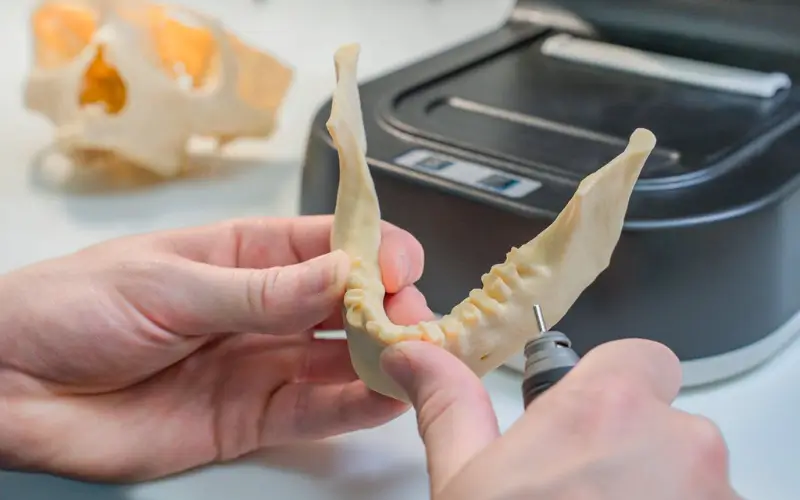Introduction
As healthcare systems continue to grow in complexity and demand, the need for efficient and scalable solutions becomes more pressing. One area that holds significant potential for transformation is the patient intake and administrative process. Implementing a virtual medical receptionist within large health systems can improve patient experiences, streamline operations, and reduce costs. A medical virtual receptionist is an essential tool for health systems looking to modernize and meet the growing expectations of patients while maintaining operational efficiency.
The Need for Virtual Receptionists in Health Systems
Large health systems face numerous challenges in managing patient flow, administrative tasks, and the overall patient experience. With a growing number of patients, health organizations struggle to provide personalized attention to each individual while managing a high volume of appointments, queries, and administrative requirements. Traditional methods, such as in-person receptionists, often result in long wait times, errors in scheduling, and increased overhead costs.
Virtual medical receptionists present an opportunity to address these challenges. By automating the intake and administrative processes, health systems can reduce the burden on human staff, lower operational costs, and provide patients with a more efficient and responsive experience.
Key Benefits of Virtual Medical Receptionists
Improved Patient Experience
Patients today expect fast, responsive, and convenient services when interacting with healthcare providers. A virtual medical receptionist can handle appointment scheduling, insurance verification, reminders, and answer frequently asked questions. This reduces the need for patients to wait on hold or deal with long check-in lines, improving their overall experience.
Additionally, virtual receptionists can offer 24/7 availability, allowing patients to book appointments or get information at their convenience, even outside of traditional office hours. This enhances accessibility and ensures that health systems can cater to a wider range of patients, including those with non-traditional work schedules.
Cost Efficiency
One of the most significant advantages of virtual medical receptionists is their ability to reduce operational costs. In large health systems, staffing a full team of receptionists to handle every patient inquiry, appointment, and administrative task can be expensive. Virtual receptionists reduce the need for large administrative teams by automating repetitive tasks and enabling existing staff to focus on more critical responsibilities.
Furthermore, virtual medical receptionists can handle multiple patients simultaneously, eliminating bottlenecks and ensuring faster service. This efficiency allows health systems to serve more patients with the same resources, maximizing revenue potential and improving the bottom line.
Reduced Administrative Errors
Human error is a common issue in healthcare administration, with mistakes in scheduling, insurance verification, and patient data entry leading to costly consequences. Virtual receptionists are programmed to follow precise protocols, ensuring that every task is performed accurately and consistently. This helps eliminate the potential for administrative errors, such as double-booked appointments, missed calls, or incorrect patient information, which can negatively impact patient satisfaction and the quality of care.
Streamlined Patient Flow
Large health systems often struggle with patient flow, particularly in busy outpatient settings. Patients may face delays in checking in, waiting for appointment confirmation, or dealing with administrative paperwork. A virtual medical receptionist can streamline the entire process by automating appointment scheduling, sending reminders, verifying insurance details, and ensuring that patient information is up-to-date. This reduces wait times and allows patients to move through the system more efficiently, improving overall patient satisfaction and increasing throughput for healthcare providers.
Scalability and Flexibility
As health systems grow, the administrative burden often increases. Virtual medical receptionists are scalable and can handle an increasing volume of patient interactions without requiring additional staff or infrastructure. This makes them an ideal solution for large health systems that are expanding their operations or serving a larger patient base.
Virtual receptionists are also flexible, capable of adapting to different workflows and requirements based on the specific needs of a health system. They can integrate with existing electronic health record (EHR) systems, patient portals, and other technologies, making them a seamless addition to current operations.
Overcoming Challenges in Implementation
While the benefits of virtual medical receptionists are clear, implementing them in large health systems does come with certain challenges. The integration of a virtual receptionist into existing workflows, training staff, and ensuring compliance with privacy regulations are all critical considerations. However, these challenges can be addressed through careful planning and collaboration between technology providers and healthcare administrators.
Integration with Existing Systems
One of the primary challenges in implementing virtual receptionists is ensuring seamless integration with existing systems. Health systems often rely on multiple platforms, such as EHR systems, scheduling software, and billing systems, which can create compatibility issues. To overcome this, it is essential to choose a virtual receptionist solution that is capable of integrating with a variety of systems. This integration will ensure that patient data is accurately captured and shared across all relevant platforms, minimizing errors and ensuring a smooth transition from traditional receptionists to virtual assistants.
Staff Training and Buy-in
For virtual receptionists to be successful, staff must be properly trained on how to use the technology and adapt to new workflows. This includes understanding how to interact with the system, how to troubleshoot common issues, and how to leverage the virtual receptionist’s capabilities to enhance their work. Ensuring buy-in from healthcare providers and administrative staff is critical to achieving successful implementation. When staff members see the value of virtual receptionists in improving their workflow, they are more likely to embrace the technology and use it effectively.
Compliance with Privacy and Security Regulations
Patient privacy and data security are paramount in healthcare. Virtual medical receptionists must comply with regulations such as the Health Insurance Portability and Accountability Act (HIPAA) to ensure that patient data is handled securely and confidentially. Implementing a solution that adheres to these regulations and meets the high standards of healthcare security is essential to maintaining trust with patients and avoiding potential legal issues.
Conclusion
The implementation of virtual medical receptionists in large health systems offers significant advantages, from improved patient experiences to increased cost efficiency and streamlined operations. By automating administrative tasks, virtual receptionists help health systems meet the growing demands of modern healthcare while maintaining high standards of service. However, careful planning and integration are essential to overcoming the challenges associated with their implementation.
As health systems continue to expand and face new challenges, the adoption of virtual receptionists will become increasingly vital in ensuring operational efficiency, reducing costs, and enhancing patient satisfaction. Embracing this technology can help large health systems remain competitive, provide better care, and meet the evolving needs of their patient populations.




